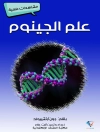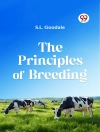This book compiles various methodologies used in understanding interactions within the rhizosphere. An in-depth understanding of the rhizosphere is essential to developing successful strategies for future sustainable agriculture. The book summarizes methods and techniques used to study the mechanisms involved in mutualistic symbioses and pathogenic interactions of plants with various microbial organisms including fungi, bacteria, and oomycetes. Each chapter discusses different methodologies used in rhizosphere biology, while also providing real-world experimental data and trouble-shooting tips. Interested researchers will also find a wealth of literature references for further research. As the first comprehensive manual and compilation of methods and techniques used in rhizosphere biology, the book represents an essential resource for all researchers who are newcomers to soil microbiology experimentation.
Daftar Isi
Part I: Root symbioses.- Chapter 1. Synthetic plasmids to challenge symbiotic nitrogen fixation between rhizobia and legumes. – Chapter 2. In vivo analysis of rhizosphere enzyme activities by the use of plastic syringes.- Chapter 3. Characterization of arbuscular mycorrhizal communities in roots of vineyard plants .- Chapter 4. Molecular methods for research on actinorhiza .- Chapter 5. Molecular and functional characterization of beneficial bacteria associated with AMF spores .- Part II: Plant pathogens and microbial plant protection.- Chapter 6. Oomycete-root interactions .- Chapter 7. Exploitation of rhizosphere microbiome services.- Chapter 8. Methods for detecting biocontrol and plant growth-promoting traits in rhizobacteria .- Chapter 9. A split-root method to study systemic and heritable traits induced by Trichoderma intomato plants .- Part III: Experimental approaches and analytical techniques in rhizosphere biology.- Chapter 10. Using a tri-isotope (13C, 15N, 33P) labelling method to quantify rhizodeposition .- Chapter 11. Microscopic techniques coupled to molecular and genetic approaches to highlight cell-type specific differences in mycorrhizal symbiosis .- Chapter 12. From imaging to functional traits in interactions between roots and microbes .- Chapter 13. Live imaging of arbuscular mycorrhizal symbiosis .- Chapter 14. Microcosm approaches to investigate multitrophic interactions in microbial communities .- Chapter 15. Analysis of common mycorrhizal networks in microcosms.
Tentang Penulis
Prof. D. Reinhardt is a researcher at the University of Fribourg, Switzerland. After completing his doctoral studies in the field of plant-pathogen interactions at the University of Basel, and a postdoc stay at the Salk Institute in La Jolla (California), he worked at the University of Bern. His main area of interest encompasses various aspects of arbuscular mycorrhizal symbiosis, with particular emphasis on the genetic factors in the host required for the intracellular accommodation of the fungal symbiont, and on the regulation of AM by exogenous factors such as nutrient availability. In addition, Prof. Reinhardt is currently investigating organ formation and regulation of the body plan of plants. This includes the positioning of leaves and flowers around the growth axis, a phenomenon known as phyllotaxis. He has published over 50 research and review articles in various scientific journals.
Prof. Anil Kumar Sharma is a Professor at the Department of Biological Sciences, CBSH G.B. of Pant University of Agriculture & Technology in Pantnagar. He completed his postdoctoral studies at the GSU, Louisiana (USA), and has been a Visiting Scientist at the University of Basel, Switzerland (2003) and University of Helsinki, Finland (2013). He has extensive research and teaching experience, and served as a reviewer for various funding bodies and international research journals. He also holds two patents in plant biology and microbiology, respectively. The recipient of various prestigious grants, he has published more than 60 research articles and 30 review articles, as well as two books with prominent publishers.












